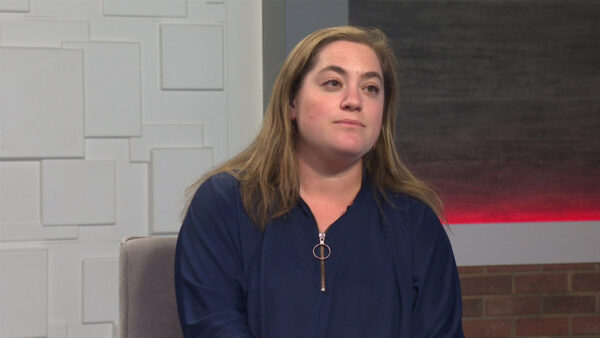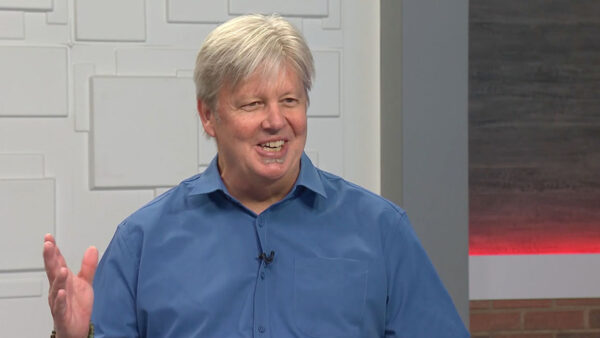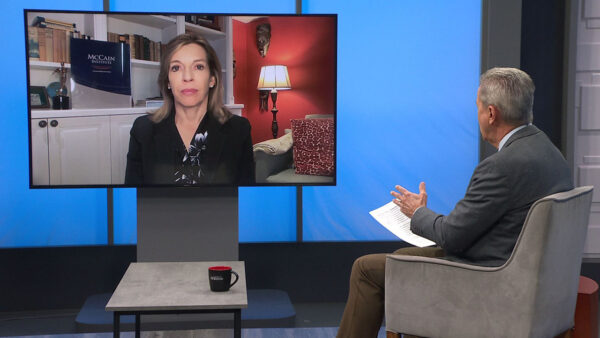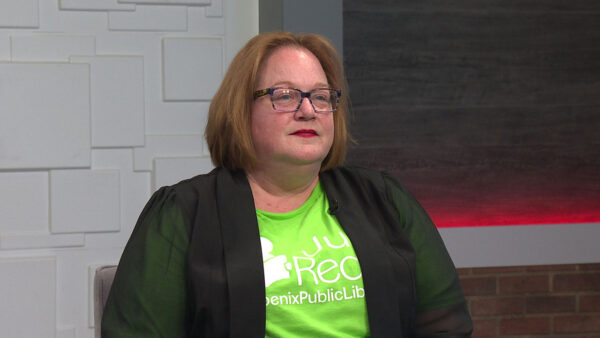Arizona State University’s Center for Science and the Imagination’s Project Hieroglyph brings together science fiction authors with scientists, engineers, scholars, artists and others to create optimistic, technologically-grounded visions of the future. On May 26, the paperback edition of the anthology “Hieroglyph: Stories & Visions for a Better Future” was released. Ed Finn, director of the center, will talk about Project Hieroglyph.
TED SIMONS: Project hieroglyphs is an effort by ASU's center for science and the imagination to team engineers and scholars with science fiction writers to inspire a more optimistic and inspiring look at the future. Ed Finn is director of the center for science and the imagination. He joins us now, good to have you here.
ED FINN: Thanks for having me.
TED SIMONS: We have had a lot of science fiction folks on the air here, a lot of future visions, and most of these, a little dark, a little bleak, and I know that you have got this new anthropology out, which we will talk about in a second, but are you different?
ED FINN: Yes. Although, I think that we all need hope, we all need optimism. It's fuel for anything that we want to do. You are never going to make it in the world if you don't have some fundamental beliefs that we can make things better. But for some reason, many of the stories that we tell ourselves about the future, are incredibly bleak. I guess that sells movie tickets, and it's exciting and makes for good explosions but doesn't really help us to plan for the world that we're going to live in.
TED SIMONS: What happened to Buck Rogers and Captain Kirk and all the guys who went boldly where no matter has ever gone before?
ED FINN: That was really one of the inspirational sources for the project, is how can we get back to that sense of optimism without necessarily buying into all the other stuff that came along with the science fiction in the 1950s and 1960s if you go back and watch the jettisons, the future looks like it but the gender politics do not. So, we do want to capture that spirit, though. I think that it's a complicated answer, for why we have lost that feeling. It's about the transition from the Kennedy years, and the "Apollo" missions to the kinds of relationships that we have with politics and culture more broadly today. But, fundamentally, it's a world that we need to get back to.
TED SIMONS: So project hieroglyph. What's that all about?
ED FINN: So, this is our effort to change things. And this started out as a conversation that one of our writers had, the founder of the project, Neil Stevenson, with ASU's President, Michael Crow, and Stevenson was making this claim. We have lost our ambition to do big stuff. He grew up with watching the Apollo missions, the landings on the moon, the grand national infrastructure projects. And now, as Peter teal puts it, we were promised jet packs and we got 140 characters. We're spending lots of money and we're putting our brightest minds on these problems, on big problems, but they are problems in technology and in the social networking universe, or in selling better ads, and we're not thinking about the fundamental challenges that face the human race.
TED SIMONS: So the project hieroglyph gets what? A scholar's, artists, scientists, and engineers to go to collaborate?
ED FINN: So this is our response to the problem. The project is about coming up with tangible futures that are not buck Rogers, distant galaxy far, far away. It is stuff that we can do right now. We wanted to pair up great story-tellers with scientists and engineers, so the remit for the project is come up with a story that a young scientist, engineer, or entrepreneur could read about today, and achieve within her or his professional lifetime.
So the near future.
TED SIMONS: We have heard how so many NASA engineers were raised watching star trek and said that that's what I want to do.
ED FINN: And you know what, they are still watching star trek because we don't have anything else? We are still living in the future, the future, the star trek future, the tomorrowland future is out there. It's like it's getting farther away.
TED SIMONS: In reality, I remember when we landed on the moon, everyone thought we're going to be in mars in ten years and we're going to be out of the solar system, and everyone thought things would move in leaps and bounds, and they did not. That's got to be a factor.
ED FINN: Absolutely. Progress is hard, but, it's not that -- when you look at, for example, the funding of NASA from the 1960s to today, you can see why we have not made that progress. It's not that it's impossible. These are technically solvable challenges, as I am sure that any of our friends from NASA would be the first to tell you. It's about where we put our priorities and our resources. And fundamentally, it's about the stories that we tell. The stories that we believe in. And that's what we need to change.
TED SIMONS: And the stories in this anthropology, the paperback version, and reignites the golden age of science fiction, and our friend, Lawrence Krause, is included. Give us some other examples of what people -- these are, again, these are stories, but they are stories that aren't necessarily of the Apocalypse?
ED FINN: They are not of the Apocalypse, but they are also not all bubble gum and happiness. The -- when we talk about utopia, that's not really what this book is about. This is about thoughtful optimism. It's about a world that's hopefully better in some fundamental ways, but it's not a, an absurd pipe dream. So one of the pioneers, the Guinea pigs for this project was stevenson, himself, so he came to a structural engineer at ASU, and he had this very simple question, how tall could we build something? And Keith, this wonderful guy, professor at ASU said, well, I've been a structural engineer for 20 years and nobody has ever asked me that question. Because that's not how engineers approach their work. That's not how you teach structural engineering. And when you start taking that question seriously, it becomes something that, as Keith said, it lit up his students and his colleagues, and it wasn't a problem that you could solve by turning to chapter 2 of the textbook, which Keith wrote by the way, and answering a set of questions. It takes creative thinking, it takes imagination, and it takes people from multiple disciplines and backgrounds. So, they came up with this idea of the tall tower, 20 kilometers tall, and making space an elevator ride away, and that's -- and one of the provocative things Neil stevenson did with the story, he did not determine what you use the tower for. If you think about, it's such a gigantic thing, it would be an enterprise, and why not leave that open and leave that to the reader's imagination. He gave some hints but to leave that open. That's one of my favorites.
TED SIMONS: And indeed, again, you have a science fiction writer or someone who wants to write science fiction, going to an engineer or a scientist or a psychologist or anyone, any kind of a scholar and saying, here's what I want to do, and you have got to make a story technically grounded. So there has -- this is not just complete fantasy.
ED FINN: Yeah, and that is -- was a really interesting challenge for everybody involved. I should really make sure to explain, this is an experiment. And this is not something that was intended to be, you know, a final proof for our idea. This is really an invitation to everybody, and I know watchers of this program, as well, to come and participate and get involved. When we published the book, we wanted to make sure that this is not a dud tree commemorating a thing over a party you missed. This is an invitation, a thing getting started. So these collaborations happen in a lot of ways. And the writers, the scientists, the engineers, and other people all had to take some risks. The writers didn't -- we did not let them write a story in secret and show it to us later. Which is how writers prefer to do it. We said come with your ideas, and you know, share things -- share work in progress, and we asked our scientific and other technical collaborators to do the same. To talk about things that are not totally vetted and safe, to talk about speculative ideas that are right around the corner, but that they probably wouldn't be talking about in a peer review journal.
TED SIMONS: It sounds like there is enough emphasis on optimism, at least on ambition and inspiration. It sounds like good stuff. Thank you very much for joining us. We do appreciate it.
ED FINN: Thank you.
TED SIMONS: And Wednesday, on Arizona Horizon, we will speak with a state lawmaker who wants more focus on the parents of can children suspected of being abused, and hear about early career scientist and is engineers awarded money to conduct research. That's on the next Arizona Horizon. I'm Ted Simons, thank you very much for joining us. You have a great evening.
VIDEO: Arizona Horizon is made possible contributions from the friends of Eight, members of your Arizona PBS station. Thank you.
Ed Finn:Director of the Arizona State University's Center for Science and the Imagination























